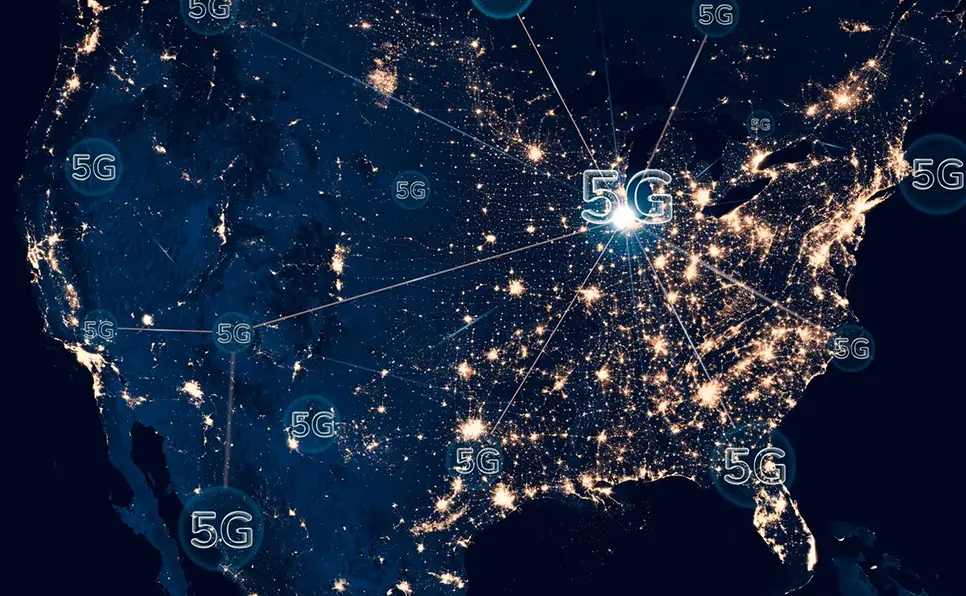Evolution of 5G Network Technology
5G, or fifth generation, wireless technology is the latest and greatest in mobile network technology. It promises to revolutionize the way we communicate, work, and live. With its lightning-fast speeds, ultra-low latency, and increased capacity, 5G has the potential to change the way we interact with technology and the world around us. What is a 5G Network Technology? 5G is the fifth generation of mobile networks, following 4G, 3G, and 2G. It is a new type of wireless technology that promises to offer faster speeds, lower latency, and increased capacity compared to previous generations of mobile networks. 5G networks are designed to support a wide range of new use cases, including virtual reality, augmented reality, the Internet of Things (IoT), and other emerging technologies. This will enable new business models and create opportunities for innovation in various sectors. 5G networks are designed to be more energy efficient than 4G networks, which will make them more sustainable in the long run and reduce the environmental impact of mobile networks. Networks are also designed to support a higher level of reliability than 4G networks, which will make them suitable for mission-critical applications such as self-driving cars, remote surgery, and industrial automation. 5G networks work by using a combination of different types of spectrum, including high-frequency millimeter wave spectrum and lower-frequency sub-6GHz spectrum, which allows for better coverage and penetration in buildings and other hard-to-reach areas. Overall, 5G technology is a new generation of mobile networks that promises to revolutionize the way we communicate and interact with technology, providing faster, more reliable, and more efficient wireless connections for a wide range of devices and applications. Features, Benefits, and Advantages of 5G Network Technology: One of the key features of 5G is its impressive speed. While 4G networks typically max out at around 100Mbps, 5G networks can reach speeds of up to 10Gbps. This means that 5G networks can download an entire HD movie in just a few seconds, compared to several minutes on a 4G network. This increased speed will have a huge impact on how we use our mobile devices, allowing us to stream high-definition videos, play online games, and download large files with ease. Another major advantage of 5G is its ultra-low latency. Latency is the time it takes for a device to send a signal to the network and receive a response. On 4G networks, latency is typically around 50 milliseconds, but 5G networks can have latency as low as 1 millisecond. This ultra-low latency will enable new use cases such as remote surgery, autonomous vehicles, and industrial automation. In addition to speed and latency, 5G networks also offer increased capacity. This means that more devices can connect to the network at the same time without any loss of speed or performance. This is especially important as the number of connected devices continues to grow. According to a study by Ericsson, there will be around 29 billion connected devices by 2024. With 5G, we will have the capacity to oversee this influx of devices without any issues. Some additional Benefits: Improved coverage: 5G networks use a combination of high- and low-frequency spectra, which allows for better coverage and penetration in buildings and other hard-to-reach areas. This means that 5G networks will be able to reach more people in more places than 4G networks. More efficient use of spectrum: 5G networks use a technique called “massive MIMO” (multiple input, multiple outputs) which allows for more efficient use of spectrum. This means that more data can be transmitted in the same amount of spectrum, which will increase capacity and reduce congestion on the network. Support for new use cases: 5G networks are designed to support a wide range of new use cases such as virtual reality, augmented reality, and the Internet of Things (IoT). This will enable new business models and create opportunities for innovation in various sectors. Improved reliability: 5G networks are designed to have a higher level of reliability than 4G networks, which will make them suitable for mission-critical applications such as self-driving cars, remote surgery, and industrial automation. Increased energy efficiency: 5G networks are designed to be more energy efficient than 4G networks. This will make them more sustainable eventually and reduce the environmental impact of mobile networks. Advanced Network slicing: 5G networks will allow for advanced network slicing, which enables network providers to create multiple virtual networks that can be tailored to specific use cases. This will allow for more efficient use of network resources and enable new business models. How did 5G Network Technology evolve? The evolution of 5G network technology can be traced back to the early days of mobile communication. The first generation (1G) of mobile networks was introduced in the 1980s and primarily focused on voice communication. The second generation (2G) of mobile networks, introduced in the 1990s, introduced the concept of digital communication and data services such as text messaging. The third generation (3G) of mobile networks, introduced in the 2000s, brought significant improvements in data speeds and the ability to access the internet on mobile devices. The fourth generation (4G) of mobile networks, introduced in the 2010s, brought even faster data speeds and the ability to support more devices and applications. The development of the 5G network technology began in the early 2010s, with the goal of addressing the limitations of existing 4G networks and meeting the growing demand for mobile data. 5G networks are designed to provide faster download and upload speeds, lower latency, and increased capacity for connected devices. This is achieved through the use of higher frequency spectrum bands, advanced modulation techniques, and the deployment of small cells and other types of infrastructure. The 5G standardization process has been ongoing for several years, and the first commercial 5G networks were launched in 2019. Since then, the deployment of 5G networks has been gaining momentum globally, and it is expected that 5G will become the dominant mobile network technology in the coming years. The evolution of 5G network technology
Evolution of 5G Network Technology Read More »







